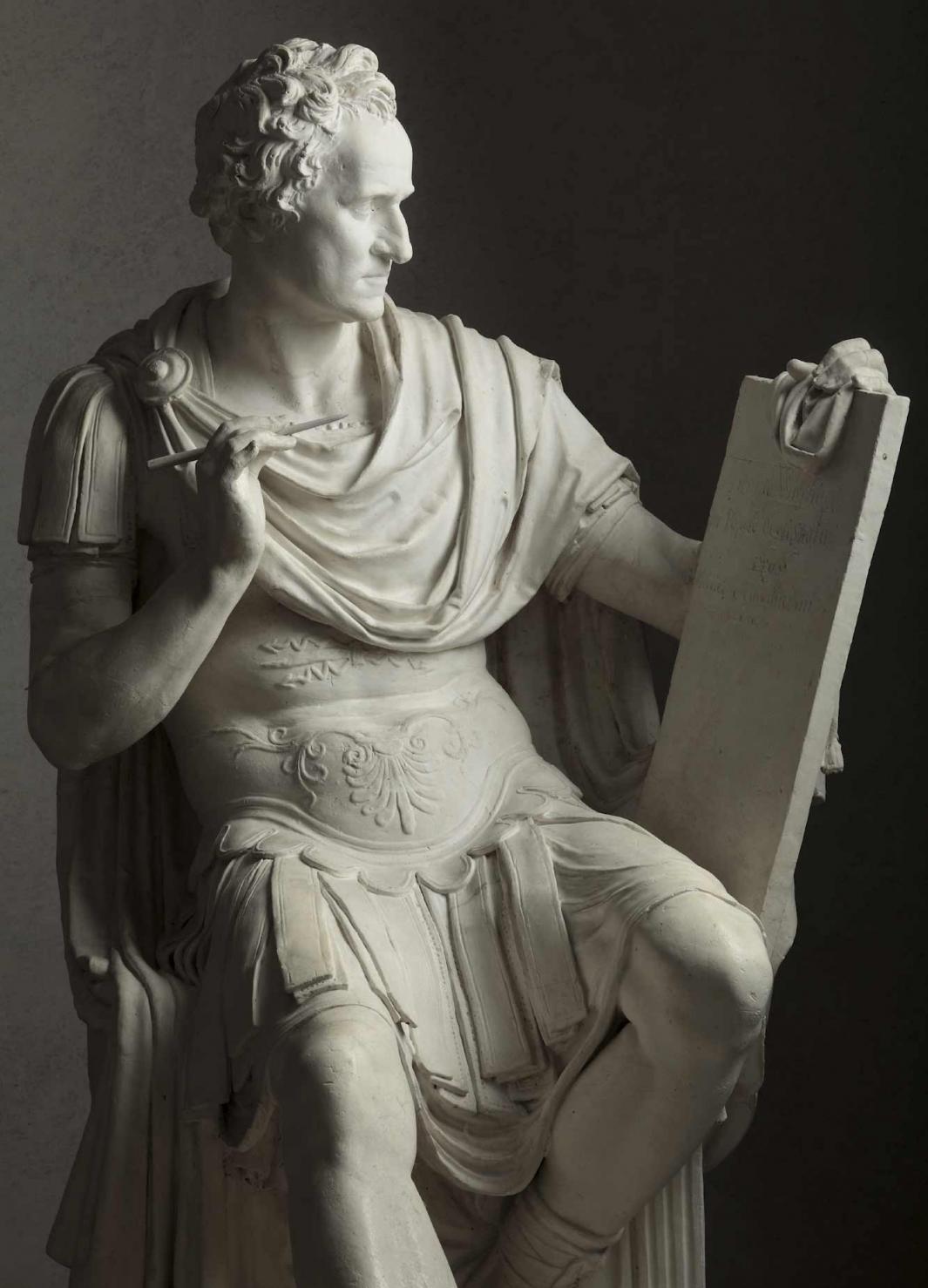In 1816, the General Assembly of North Carolina commissioned a full-length statue of George Washington for the State House in Raleigh. Thomas Jefferson, believing that no American sculptor was up to the challenge of depicting the fledgling nation’s first president, recommended Antonio Canova, at the time one of Europe’s most celebrated artists. The first and only work Canova created for America, the statue was unveiled to great acclaim in 1821. Tragically, only a decade later, a fire swept through the State House, reducing the marble to just a few charred fragments.
Canova’s George Washington examined the history of the artist’s lost masterpiece, probably the least well known of his public monuments. It brought together for the first time Canova’s full-sized plaster model (which had never before left Italy), preparatory sketches, and related engravings and drawings. Also included in the exhibition was Thomas Lawrence’s 1816 oil portrait of Canova, which, like the plaster and several sketches, was on loan from the Gypsotheca e Museo Antonio Canova in Possagno, Italy, the birthplace of the artist.
The accompanying catalogue includes correspondence relating to the commission, as well as essays by Salomon, Guderzo, and Guido Beltramini, Director of the Palladio Museum in Vicenza, Italy.
Principal funding for the New York exhibition was provided by an anonymous gift in memory of Melvin R. Seiden and by Ambassador and Mrs. W. L. Lyons Brown.
Additional support is generously provided by Mrs. Daniel Cowin in honor of Ian Wardropper; Dr. and Mrs. James S. Reibel; Luciano and Giancarla Berti; the families of George and Michael Eberstadt in memory of Vera and Walter Eberstadt; Fiduciary Trust Company International; the Foundation for Italian Art & Culture (FIAC); Carlo Orsi, Trinity Fine Art; Mr. and Mrs. Stanley DeForest Scott; Barbara G. Fleischman; Carla Bossi-Comelli and Marco Pecori; Michael L. Cioffi; and Barbara Dau.
The accompanying catalogue is underwritten by Fabrizio Moretti.
Antonio Canova, Modello for George Washington, 1818. Plaster, 66 9/16 × 39 3/8 × 54 3/4 in. Gypsotheca e Museo Antonio Canova, Possagno; Fondazione Canova onlus, Possagno; photo Fabio Zonta
